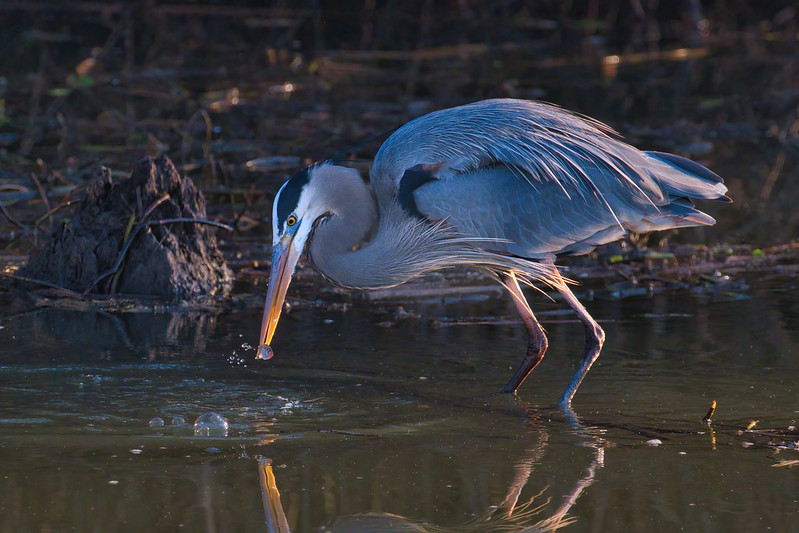On a crisp January morning at the Sequoyah National Wildlife Refuge in Oklahoma, I photographed this Great Blue Heron as it skillfully caught a small shad. The heron was hunting near the east side of the Horton Slough road bridge, where the calm water and soft light provided an excellent backdrop for this encounter.
I photographed a similar moment earlier, which you can see in this related heron fishing post.

From my pickup, I set up my gear with the camera and lens resting on a bean bag draped over the open window. This setup not only allowed me to stabilize my equipment but also served as a blind, helping me observe and photograph the heron without disturbing it. Moments like this, where patience meets opportunity, are what make wildlife photography so rewarding.
Gear and Settings
For this photo, I used:
- Camera: Fujifilm X-T3
- Lens: Canon EF 100-400mm f/4.5-5.6 L IS II USM (via Fringer EF-FX Pro adapter)
The technical details were:
- Aperture: f/7.1
- Shutter Speed: 1/2500 sec
- ISO: 2000
- Exposure Compensation: -3
- Focal Length: 400mm
The fast shutter speed was essential for freezing the heron’s movement as it dipped into the water. The aperture of f/7.1 provided enough depth of field to capture sharp detail while gently softening the background. The high ISO was necessary to compensate for the dim morning light.
Observing the Heron’s Skill
Watching this Great Blue Heron in action was a reminder of their incredible hunting techniques. Their patience, precision, and quick reflexes make them formidable hunters. Capturing this moment, with the shad in its beak and the ripples in the water, highlights the heron’s connection to its environment and its role in the wetland ecosystem.
This scene, like many at Sequoyah National Wildlife Refuge, showcases the beauty and drama of wildlife in its natural habitat. Moments like these are why I keep returning to this incredible refuge.
